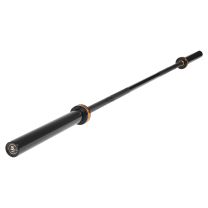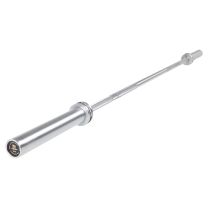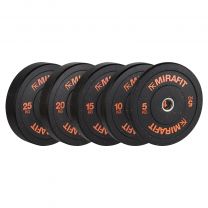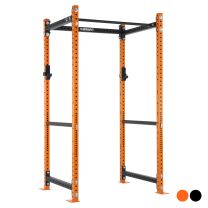Top Ten Tips for Lifting Safely
Top Ten Tips for Lifting Safely
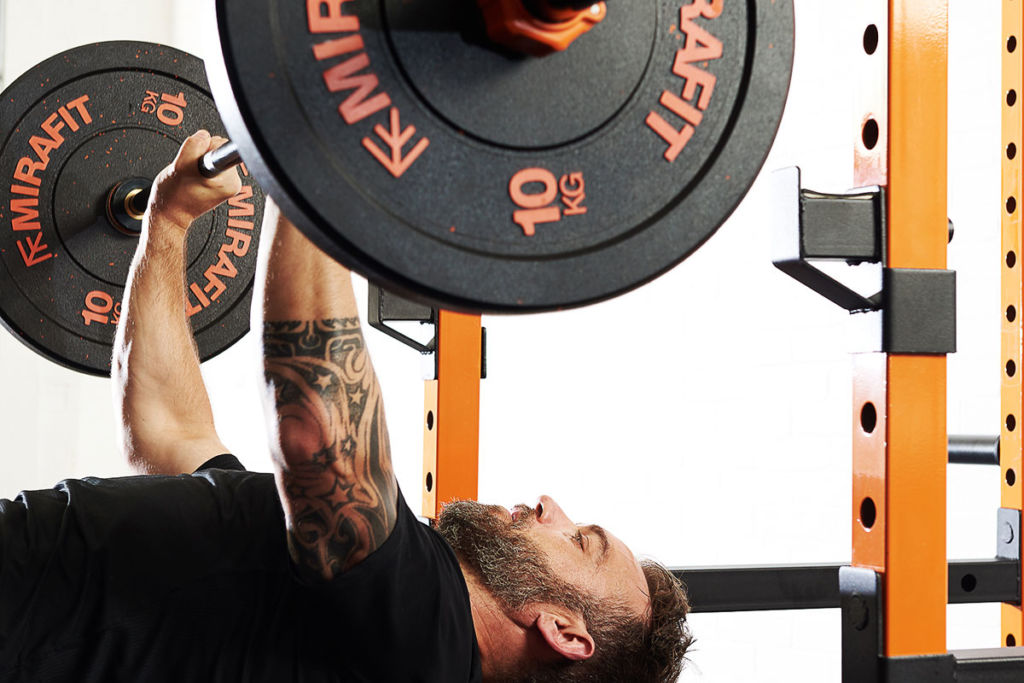
We've all been there; you're distracted or busy or eager to put your new gear to use straight away but there are a few important safety tips to bear in mind that will keep you safe and your equipment in top condition. We spoke with JayJay Anthony, founder of the UK Home Gym Community Facebook Group about his top gym safety tips, and what happened when his third party bench failed during a session and his Mirafit rack saved him from injury.
1 - Set Spotters at Correct Height
Spotters are there to catch the barbell if you fail your lift, lose your footing or lose your grip on the bar. Setting the spotters at the correct height can prevent the worst from happening.
JayJay said "I was doing a routine incline barbell bench press when, part way through my set, the bench just collapsed. It was the rack that stopped me from getting injured. The spotters did their job and caught the weight, otherwise there would have been the potential for serious injury."
Ensure you have the right size spotters for your rack and position them at the correct height - if you're benching you want them only slightly lower than where the barbell touches your chest. If you're squatting, you want them set one notch below your maximum squat depth.
2 - Set Bar at Correct Height
When bench-pressing you want the bar to sit at the correct height on your bar rests. If you find your shoulders rounding, the bar is set too high. If you find that you're locking your arms, the bar is set too low. You want to be able to grip the bar with slightly bent arms and to only need to lift it slightly to clear the bar without straining.
3 - Don't Lift Too Big Too Soon
One of the biggest mistakes people make when starting a strength training routine is ego lifting. It is always better to start with less weight on the bar than you think you can lift. You can also start by just lifting with an empty bar, which means that you're able to perfect your form before adding extra weight. Many gym beginners worry that people will judge them for starting slowly but, trust us, everyone is focused on themselves. Trying to lift more than you're capable of will draw far more attention.
4 - Collars

When lifting you want to ensure that you have a pair of collars securing your plates to the bar. This is done to stop them from sliding around and falling off, causing you to lose control of the bar. The exception to this rule is the bench-press, if you become trapped underneath your bar, being collar free allows you to slide the plates from the bar and relieve the pressure. Going collar-free is not suggested if you are a beginner, as you may struggle to control the bar without it tilting to one side without more experience. Focus on getting your form correct, and getting used to controlling the bar before you bench heavy amounts or go collar free. However, whether you are bench-pressing with collars or without, always use spotters or have someone ready to spot you.
5 - Plant Your Feet Firmly
While benching you want to keep your feet firmly planted on the ground, so that they don't lift up or move around. Keeping your feet grounded will keep your core braced and your body stable. Drive through your heels while you press, squeeze your glutes, keep your core tight and dig into the bench with your traps to keep total body tension.
6 - Tidy Your Gym
Always be aware of your surroundings while exercising in the gym. Keep the floor around you clear of items that could cause you or someone else to slip, trip or fall. If you're lifting in a home with children or pets, make sure they don't run around you, especially while lifting heavy weights. Never leave them in a home gym unsupervised and keep the doors locked when you're not using it. If you have piles of dumbbells or haphazardly piled plates sitting in the corner of your gym, why not invest in some gym storage solutions, both to improve safety and make retrieving kit during your workout quicker.
7 - Grip the Bar Equally on Both Sides

Whether you favour a close grip, a standard grip or a wide grip on your barbell you want to ensure that your hands are equally placed. This will allow you to control the bar without it tilting and throwing off your centre of balance.
8 - Bolt Your Rack Down
Unless your power cage or squat rack specifications state that it doesn't need to be bolted down, you should bolt it down. Bolting your rack to the ground will keep it steady, and stop it from rocking or springing up if you drop your barbell. Not able to drill holes in your floor? The M100 Power Rack can be used bolted or unbolted. Make sure that you buy your racks from a company that you trust. JayJay told us that his rack is "the main part of my gym, I can't stress enough how important it is to have trust in that piece of kit."
9 - Don't Exercise While Compromised
It should go without saying but if you've had a drink you don't want to be using exercise equipment. Similarly, you don't want to work out if you are tired, injured, very stressed, ill or for any other reason that might harm your concentration or reaction times. Accidents can happen quickly and you need to be ready to react quickly to them.
10 - Be Prepared
When his bench failed JayJay says he was "initially panicked and scared" and that you should always have a "Plan B". If you're starting a new type of lift, or using a new piece of exercise equipment, research how to use it safely, what can go wrong and, if something goes wrong, how you can get yourself free. Always have either another person or your phone on you in case you get trapped and need to call for help and "always do a warm up set or two" before beginning lifting heavy.
For more content, follow us on Instagram, YouTube, TikTok, and on our official Mirafit Facebook page.
Enter your email to signup to our newsletter
Tags: Equipment > Power Racks and Cages ; Exercise Type > Strength

